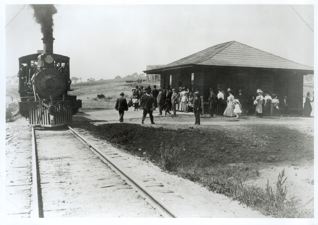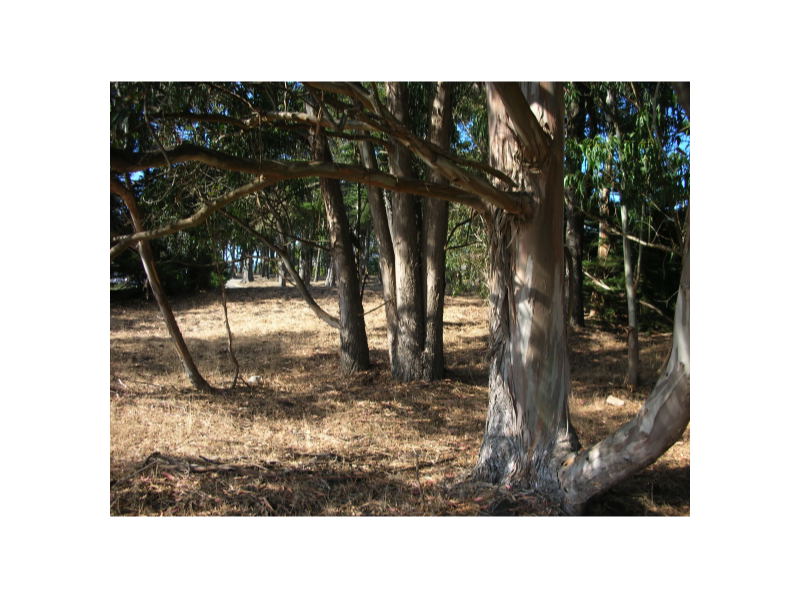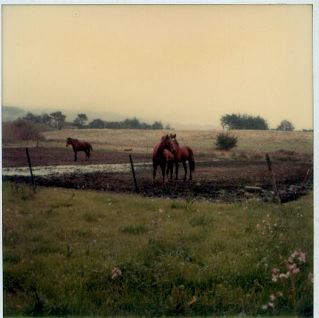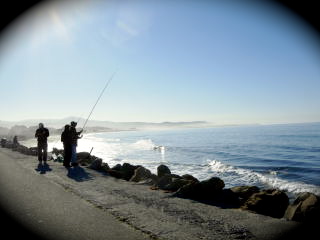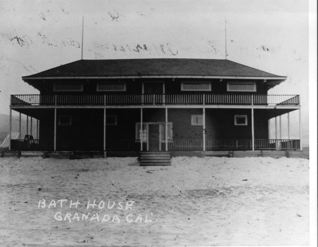
(Photo: The Bathhouse, where, in 1910, a big party was held to celebrate its opening.)
The abundance of new street signs planted in the dark loamy soil must have been an eerie sight: street signs, concrete sidewalks, some fields of artichokes and no houses. Or maybe they were signs of hope, of future, prosperous neighborhoods, home to happy families.
Realtor Charles Wagner was a very good salesman, who captured imaginations, selling $6000 worth of lots on one occasion alone.
On a cool September night in 1910, the Granada Bath House–a symbol of the “Coney Island West” built overlooking the Pacific Ocean near Surfer’s Beach–was officially opened with a big party. Three hundred guests, including two bus loads of the Moss Beach elite, dined and danced to the music of Popken’s Orchestra.
Two incompatible forces were moving parallel lines. Prospective lot buyers flocked to the Coastside while local agriculture and quarrying thrive. Reportedly, in 1910, 2500 Ocean Shore Railroad cars were filled with fruit, vegetables as well as stone from the Ebalstone and Ransome Quarry and the Sand Pits. The Coastside produced one of the largest crops of hay and grain ever.
…more…

